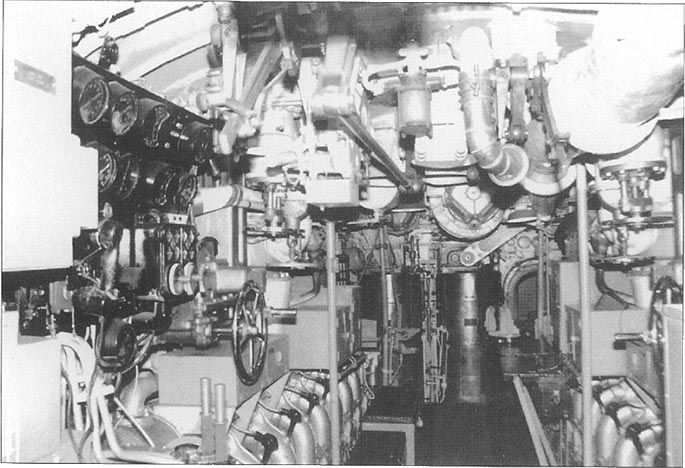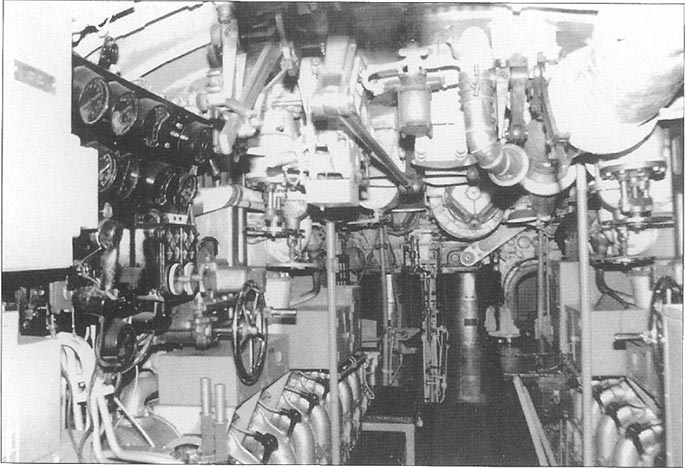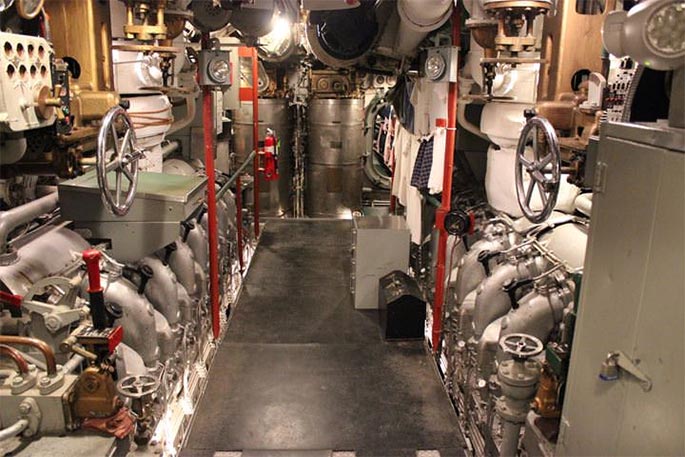Hi everyone! It’s Tautog. Hope you’ve all been well. We’ve been kept really busy here!
Today, I want to talk about something that I think might be obvious, but actually isn’t.
Water.

Hi Tautog! I have another question.
Do submarines carry water? If so, how would they carry enough to last everyone such a long time?
The answer to the first part of this question is that they do. Submarines generally have water tanks or storage tanks meant for fresh water storage. Fresh water is handy for a lot of things. Drinking, cleaning, and it’s also used for a lot of work on the submarine itself like maintaining the batteries. The Navy says that a submarine uses about 500 gallons of water a day, not counting the water needed by the batteries of the sub.
However, a submarine does not actually carry a lot of fresh water. It wouldn’t be practical! So, in American submarines, fresh water is made from the things I posted in the picture below.

Okay, this is an engine room of a submarine. You see those two big metal bucket looking things towards the back (center of the picture)? Those are water distillers.
(I can’t find a good US navy picture, but here’s a gentleman who took some very good pictures on the USS Cod. His website can be found here and this one that he took!)

The distiller itself works pretty simply. Water is heated up. Water turns into steam. Steam travels to a set of cooling coils, gets condensed back into fresh water, and it gets collected in those tanks.
On a good day, those distillers can produce about a bit more than 500 gallons. On a really good day, they can make up to about a thousand gallons. It is a very tough job, however, because you’re generating steam constantly. Needless to say, it’s pretty hot.
There’s also another source of fresh water called the condensate. Basically, the ocean is actually pretty cold. The activity of a submarine like cooking or working generates heat. This heat is actually going to form small amounts of vapors around the submarine, too. It explains why the submarine is always humid.
Now, American sub designers (thanks in big part to officers like Lockwood) focused significantly on the habitability of the crews. The best way to get around this matter was to have a dehumidifier located in the air conditioning itself. This drew the condensed water all into one other tank, and gave the submariners another small source of water.
What this means is that while water was still a rare commodity, the American submariner had plenty more to spare than his counterparts in the other navies. This was enough to give him two fresh-water showers a week.
Sure, the water might smell funny (remember that distilling will get rid of things like salt that doesn’t vaporize at the temperature when water does, but the water’ll still hold onto stuff like gasoline and other oddities), and a Navy shower is really more like, get wet, soap, rinse, but it was still a shower.
In fact, it was something that other submariners often didn’t get. Most U-boat submariners would have salt-water soap, or in other cases issued deodorant and told to go without them.
I think it’s worth stressing that newer American submarine designs focus significantly on crew morale and habitability. Having air conditioning and yes, showers, helped a ton!
See you next time!
Psst.
Yeah, you. Cat and the other well-behaved readers. Here’s something else that you guys might want to know about.
Do you know what happens when a bunch of young men gets bored when they’re on shore?
Well, they get bored. Of course.
But also, they go looking for fun. Fun could be games, or gambling, or girls, but there was one particular kind of fun that many were interested in. Drinking!
The USN was a dry navy. It didn’t mean that there weren’t commanders who looked the other way, but alcohol was otherwise hard to find. Just as the Soviets brewed their own potato vodka, however, the Americans drank whatever they could find. In their case, the torpedoes themselves actually used ethanol.
Of course, the navy wasn’t dumb. They added stuff to the ethanol to make sure you couldn’t just drink it. However, a bit of poison never stopped American ingenuity. See what I said up there about the distiller?
No, of course they weren’t using the submarine’s distiller to do this job! That would contaminate the water and put everyone at risk.
But, the principle was the same. Strict sub commanders had to keep a close eye on the kitchen galley. Silex coffee makers (the same type in the Navy Cookbook – it’s called Spruance’s Coffee!) were basically commonly smuggled out with hot plates or other fuel source.
So long as they can find something to condense the evaporated vapor with, yeah, actually, they could distill a fair bit of alcohol over time. They even gave it a name – “Gilly.”
Please don’t actually do this at home. I or any of the people here take no responsibility for anything so you have been warned!
(If you want USS Tautog’s own torpedo juice recipe, it’s two parts distilled alcohol three parts pineapple juice with splash of lime juice or lemon juice. The powdered stuff that came in cans worked in like, 1943, so I assume there must be canned lemon juice things around too.)
I suppose if you use really strong rum it’s close enough. Anyways, please don’t do anything that would get yourself in trouble or endanger other people. See you next time!)
